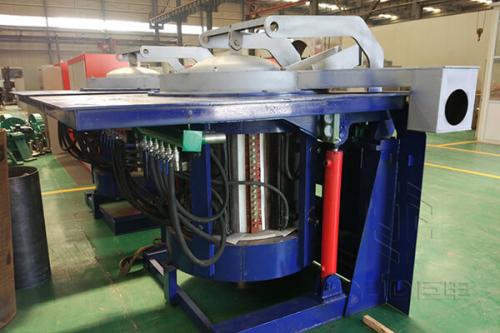What Is an Induction Foundry Furnace?

An induction foundry furnace is a type of furnace used for melting and casting metal in foundry applications. It utilizes electromagnetic induction to generate heat within the metal charge, resulting in efficient and precise melting.
Here are some key features and specifications to consider when purchasing an induction foundry furnace.
Working Principle
Induction foundry furnaces utilize electromagnetic induction to generate heat within the metal charge. The furnace contains a coil that carries an alternating current, creating a rapidly changing magnetic field. When a conductive metal is placed within this magnetic field, eddy currents are induced in the metal. These eddy currents generate heat due to the electrical resistance of the metal, resulting in the melting of the metal charge.
Melting Efficiency
Induction furnaces are known for their high melting efficiency. The induction heating process allows for direct and localized heating of the metal charge, resulting in rapid and efficient melting. This efficiency can lead to reduced energy consumption and shorter melting cycles compared to other types of furnaces.
Metal Compatibility
Induction foundry furnaces can be used to melt a wide range of metals and alloys, including iron, steel, aluminum, copper, brass, bronze, and various other non-ferrous metals. The furnace design and power specifications may vary depending on the specific metal being melted.
Crucible Types
Induction foundry furnaces typically use crucibles to contain the molten metal. Crucibles are available in different materials, such as graphite, ceramic, or refractory metals like platinum or tungsten. The choice of crucible material depends on factors such as the melting temperature of the metal, chemical reactivity, and durability requirements.
Precise Temperature Control
Induction furnaces offer precise temperature control during the melting process. Advanced control systems allow operators to set and monitor the desired temperature, ensuring accurate melting and casting of the metal. Temperature sensors and feedback mechanisms help maintain the desired temperature within a tight tolerance range.
Casting Options
Induction foundry furnaces can be used for various casting methods, including sand casting, investment casting, and continuous casting. The molten metal can be poured into molds or used for other casting processes based on the specific requirements of the foundry.
Automation and Integration
Induction foundry furnaces can be integrated into automated foundry systems for increased efficiency and productivity. They can be connected to robotic systems, conveyors, and other equipment to facilitate seamless material handling and process control.
Environmental Considerations
Induction furnaces are generally considered to be more environmentally friendly compared to traditional combustion-based furnaces. They produce fewer emissions and pollutants since the heating process is electrically powered. Additionally, induction furnaces do not require the use of fossil fuels, which can contribute to a reduction in carbon footprint.
When considering the purchase of an induction foundry furnace, it's important to evaluate your specific production requirements, the type of metals you'll be working with, and the level of automation or integration needed. Consulting with experienced suppliers or manufacturers can help you select the most suitable furnace for your foundry operations.
Post Your Ad Here
Comments